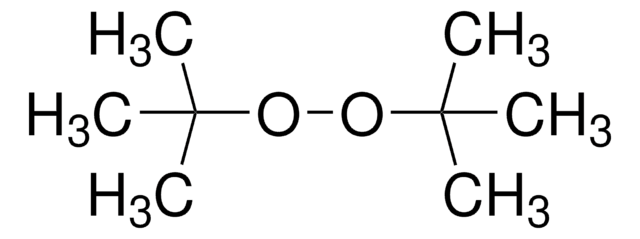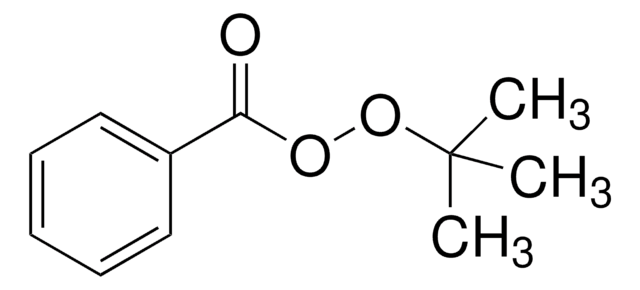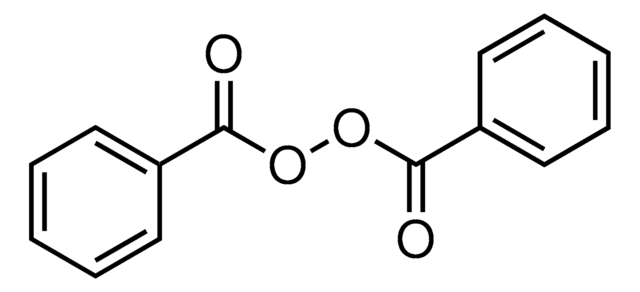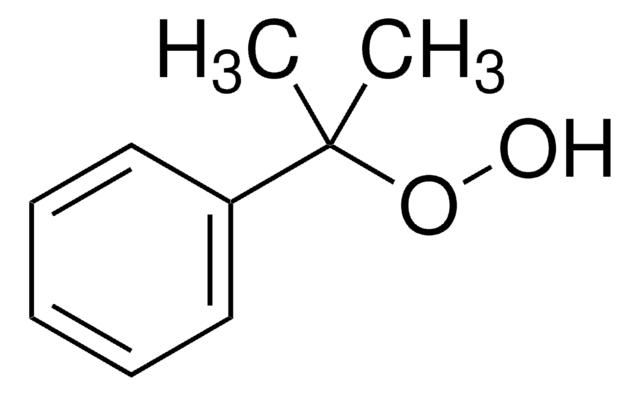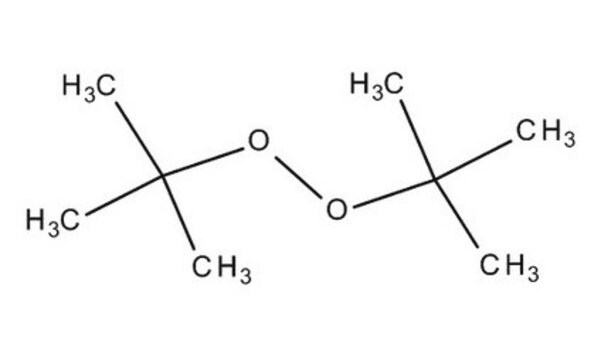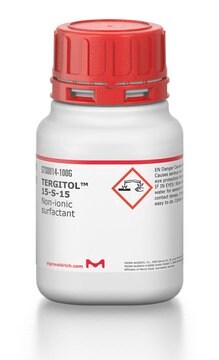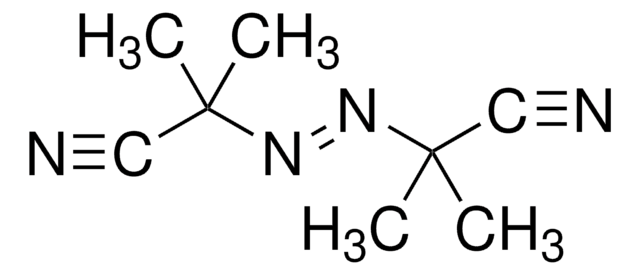329541
Dicumyl peroxide
98%
Synonym(s):
Bis(1-methyl-1-phenylethyl) peroxide, Bis(α,α-dimethylbenzyl) peroxide
About This Item
Recommended Products
vapor density
9.3 (vs air)
Quality Level
vapor pressure
15.4 mmHg ( 38 °C)
Assay
98%
form
solid
reaction suitability
reagent type: oxidant
mp
39-41 °C (lit.)
density
1.56 g/mL at 25 °C (lit.)
storage temp.
2-8°C
SMILES string
CC(C)(OOC(C)(C)c1ccccc1)c2ccccc2
InChI
1S/C18H22O2/c1-17(2,15-11-7-5-8-12-15)19-20-18(3,4)16-13-9-6-10-14-16/h5-14H,1-4H3
InChI key
XMNIXWIUMCBBBL-UHFFFAOYSA-N
Looking for similar products? Visit Product Comparison Guide
Application
- in vulcanization of rubber
- as a crosslinking agent in the synthesis of polylactic acid composite fibers
- in the preparation of polyethylene composites
- in the synthesis of polyamide 112/ethylene vinyl acetate copolymer blends.
Signal Word
Danger
Hazard Statements
Precautionary Statements
Hazard Classifications
Aquatic Chronic 2 - Eye Irrit. 2 - Org. Perox. F - Repr. 1B - Skin Irrit. 2
Storage Class Code
5.2 - Organic peroxides and self-reacting hazardous materials
WGK
WGK 3
Flash Point(F)
230.0 °F - closed cup
Flash Point(C)
110 °C - closed cup
Personal Protective Equipment
Choose from one of the most recent versions:
Already Own This Product?
Find documentation for the products that you have recently purchased in the Document Library.
Customers Also Viewed
Our team of scientists has experience in all areas of research including Life Science, Material Science, Chemical Synthesis, Chromatography, Analytical and many others.
Contact Technical Service